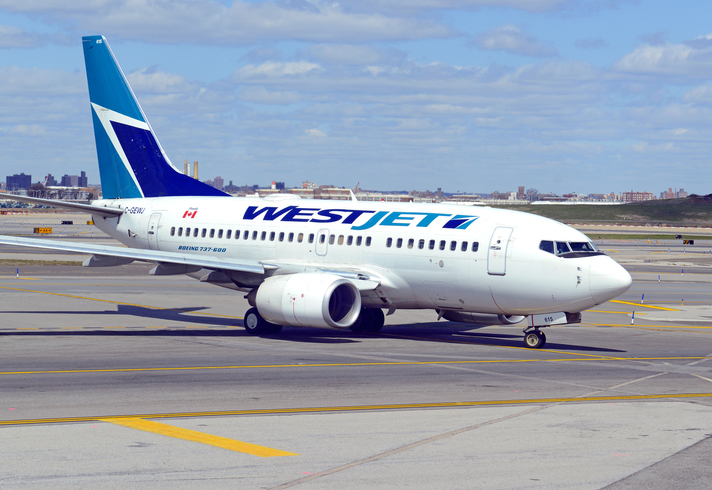Canada’s second-largest carrier WestJet Airlines Ltd aims to grow its share of higher-paying passengers to a similar level as its 37 percent overall market share, Chief Executive Officer Ed Sims said yesterday.
The Calgary-based airline carries about 21 percent of business and premium passengers, even though it has a 37 percent share of the market overall in Canada, Sims said in an interview following the company’s investor day presentation in Toronto.
“We’d like to have a similar market share in the premium market for that which we have in the Canadian market,” he said by phone.
WestJet’s premium economy cabin revenue rose 70 percent this year over 2017, helped by fees for perks like priority boarding.
But the airline said it faces pressure from rising costs for labor and maintenance, along with the introduction of its new Boeing 787 widebody service in 2019, weighing on the stock, which ended down 2.3 percent. The benchmark Canada stock exchange was down 1.4 percent.
WestJet said it expects cost per available seat mile (CASM) excluding fuel, to be flat or rise by about 2 percent next year, as it introduces the Boeing 787 Dreamliner.
Analysts were expecting a decline in CASM next year, according to notes reviewed by Reuters.
The guidance includes higher costs anticipated for a new pilot contract, Chief Financial Officer Harry Taylor said during the investor day presentation.
WestJet will introduce business-class cabins on its new Boeing 787 Dreamliner jets in 2019, as it seeks to grow revenues after a difficult 2018.
WestJet was hit this year by a combination of higher fuel costs, tough domestic competition and the threat of a strike by its recently-unionized pilots, which sent its stock down about 23 percent, year to date.
Earlier on Tuesday, WestJet forecast revenue per available seat mile (RASM) in 2019 to grow 2-4 percent, helped by higher demand and a target to grow ancillary fees from approximately C$32 to more than C$40 per passenger on its budget airline Swoop.
A key industry metric, RASM is calculated by dividing operating income by available seat miles. WestJet does not break out revenues for premium economy or business travel.
The carrier expects earnings per share to grow at a compound annual growth rate (CAGR) of more than 40 percent between a weak 2018 and 2022, helped by an expansion in Dreamliner and Swoop service.







